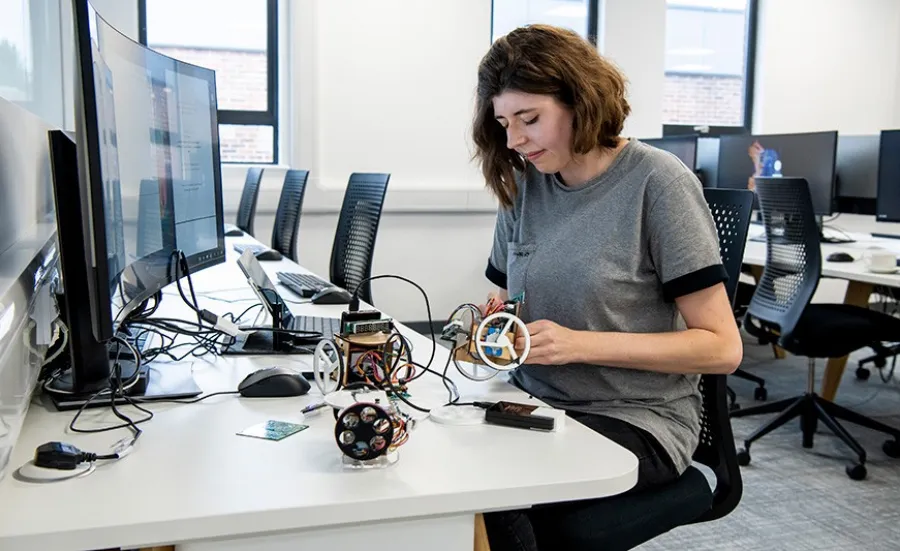Current research degree projects

Explore our current postgraduate research degree and PhD opportunities.

Explore our current postgraduate research degree and PhD opportunities.

Perovskite quantum dots show great potential for tunable light emitters. In particular, they can be employed as single-photon emitters, which are key building blocks for quantum communication networks. This project will study the fundamental photophysics behind photon emission of perovskite semiconductor nanoparticles and develop new platforms for quantum technologies.
This project will develop detectors for topologically structured light at the few- and single-photon level, enabling applications in imaging, metrology, and telecommunications.
Inhomogeneities degrade the performance of atom interferometers used for inertial and magnetic sensing. Optimal Control allows the design of laser pulse shapes that restore interferometer fidelity. This project will extend optimal control design beyond individual pulses to entire interferometer sequences and systems, and explore curious artefacts.
Atom interferometry uses laser light to split, steer and recombine atomic wavefunctions, and promises inertial and magnetic field sensors of exquisite sensitivity. Practical realization requires a combination of photonic and atomic physics with optimal control techniques borrowed from magnetic resonance. This project involves experimental construction, computational optimization, and field testing.
This project will explore and develop advanced photon entangled source to realize quantum enhanced microscopy imaging application.
The aim of this project is to utilise state-of-the-art 3D lithography in combination with state of the art electrodeposition to realise magnetic nanowires with controllable “flying” domain wall qubits, paving the way towards a quantum computer based upon spin textures in 3D magnetic nanowires.
This project studies nonreciprocal entanglement between frequency-distinct superconducting qubits, enabled by spatiotemporal superconducting metasurfaces.
The objective of this project is to integrate quantum communication into emerging wireless networks, paving the way for a global quantum network in time for 6G.
This project aims to investigate the bioelectric heterogeneity of colorectal cancer (CRC) and its correlation with bowel diseases and drug response, using quantum diamond microscopy (QDM).
This project explores how quantum techniques can reduce communication complexity in distributed systems. It involves studying classical and random communication complexity theories, and applying quantum methods like entanglement and superposition.